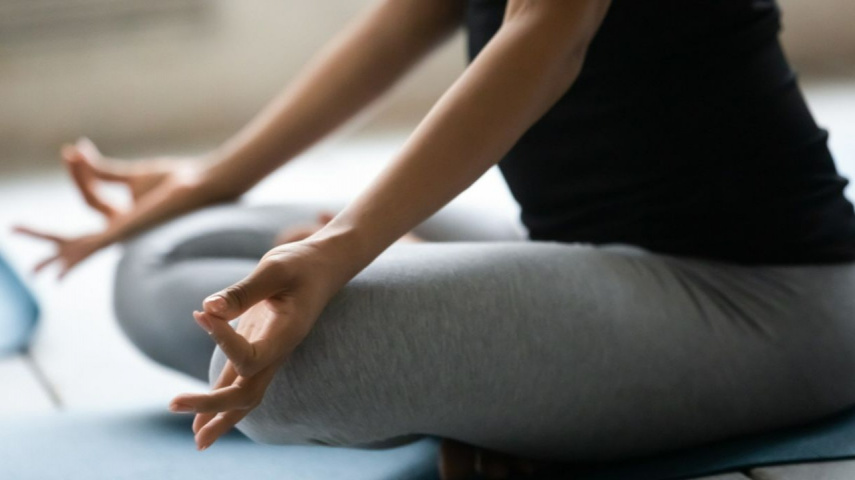Unraveling the Benefits of Vinyasa Yoga for Mind, Body, And Spirit
Explore the top benefits of Vinyasa yoga and how the dynamic postures transform your mental, physical, and emotional state, offering a boost to your overall health and well-being.

The earliest practices of Vinyasa Yoga date back to the Vedic age, which was several thousands of years ago. Here, we will understand the history, philosophy, and benefits of Vinyasa yoga — a broader term describing many different types of yoga. It is like a dance where you connect one yoga pose to the next synchronizing it with your breathing. This dynamic form of yoga can be curated to be beginner-friendly as well as stimulating to the experts. Therefore, one must first consult an expert before practicing a new form of yoga, especially if one suffers from certain physical conditions.
According to Bayu Prihandito, Founder at Life Architekture, Certified Psychology Expert & Life Coach, “Consulting an expert before embarking on your journey is like seeking a guide for a safe and enlightening exploration of the body and mind, ensuring a path of alignment, mindfulness, and well-being."
In Vinyasa, you transition from one pose to another, and these transitions are considered poses too. It's not just about moving in and out of poses; even when you're still, your heartbeat and breath represent the continuous flow of Vinyasa. Vinyasa Yoga not only improves flexibility and strength but also generates heat, making it a bit like a workout for your heart. Additionally, this is one of the best yoga poses that relieves anxiety helps increase awareness, and improves cognition. Therefore, incorporating vinyasa yoga can be helpful for people of any age. So, let us discuss more about this form of yoga in depth.
What Is Vinyasa Yoga?

Vinyasa is a Sanskrit term made up of two parts: "vi," meaning variation, and "nyasa," meaning within certain limits. The philosophy of Vinyasa depicts the transient nature of the universe. Therefore, it involves a flow of movements synchronized with your breathing which does not have a fixed routine or style. It is typically a physical activity involving a rapid flow through sun salutations. Sometimes Vinyasa yoga is also referred to as flow yoga or power yoga, indicative of the continued flow of posture done one after another. There are several benefits of performing this style of yoga, which may range from enhanced cardiovascular fitness, increased muscular strength, flexibility and mobility, and reduced stress levels.
11 Wonderful Benefits of Vinyasa Yoga
Vinyasa can be described as the way we physically move, reflecting our thoughts and emotions externally which can be extremely beneficial. So, here are several benefits of Vinyasa yoga that one may achieve after regular and dedicated long-term practice, including:
1. Enhanced Physical Fitness
Several postures within Vinyasa yoga engage and stretch different muscle groups in our body. Therefore, the more you practice them, the more you will visibly observe improved flexibility, strength, and endurance. Moreover, rhythmic breathing practices and flowing movements also help enhance stamina which is beneficial for overall physical fitness (1).
2. Improved Cardiovascular Health

Vinyasa yoga, which is also known as flow yoga due to its sequential and continuous movement and flowing transitions involves deep stretching and breathing techniques that act as a form of light-intensity aerobic exercise, helping enhance heart activities (1). Since cardiovascular activities are beneficial for heart health as they help increase the heart rate and blood circulation throughout the body, Vinyasa yoga can have similar effects (2). Certain postures like upper bends help in stretching heart muscle, thus promoting muscle strength and efficiency of the heart (3).
3. Boosting Muscle Tone
Vinyasa yoga may help develop and tone muscles by engaging different muscle groups through different postures. After performing the side bends, backbends, and twists of Vinyasa yoga daily, you may notice an increase in strength and balance in different muscle groups throughout the body — from the core to the limbs as the asanas allow you to use your weight, leading to improved core strength and increased muscle tone and definition (1).
Bayu Prihandito says, “Vinyasa yoga uses a range of postures to work your core muscles and strengthen them. By performing a challenging series of side bends, backbends, and twists, you may strengthen your core and increase your stability, power, and balance by using your own body weight.”
4. May Help Reduce Stress
Vinyasa yoga’s flowing nature not only helps develop physical strength and stability but also offers mindfulness and relaxation through deep breathing techniques. Since it allows your mind to stay focused and aware of the flow of the poses and their impact on different parts of the body, Vinyasa yoga may help calm the mind and relax the body, thus reducing overall stress (4). Therefore, this is considered as a form of moving meditation which offers a great option to people who get easily distracted while meditating in just one position to manage stress in a busy world.
5. Better Weight Management
The low-intensity cardiovascular exercises can induce fat loss by increasing blood supply and oxygen to the cells to break down fat for use as energy. Moreover, any physical exercise burns calories as the body requires more energy to cope with the sudden demand (2). Thus, Vinyasa yoga can help contribute to maintaining a high metabolism and managing weight, if practiced regularly provided a healthy diet is also followed (3).
6. Improved Posture And Balance

The body awareness and alignment that one needs to practice while performing Vinyasa yoga poses may help improve posture, reduce strain on the spine, and enhance the overall alignment of the body over time (5). Furthermore, with a stronger body awareness and better posture, there will be an improved sense of balance and coordination, too. Therefore, regular practices of yoga poses can enhance these skills, which can offer further physical benefits while performing various daily activities and sports (5).
7. Induce Mindfulness And Self-awareness
Vinyasa yoga teaches you to focus on your breath and the present moment, fostering mindfulness. It also encourages self-awareness, helping you build a stronger connection between your body and mind. This can further help enhance self-acceptance, regulate behavior, and heighten the sense of overall well-being.
Speaking about Vinyasa yoga, our contributor Joanne Highland, a certified yoga and barre fitness teacher, says, “Vinyasa yoga fosters mindfulness by bringing your attention to the present moment, focusing on your breath and body alignment. This instills a sense of presence and awareness, allowing you to cultivate a deeper connection with your body and mind, thus reducing stress. The physical exertion of yoga releases endorphins, or "feel good" hormones, while the meditative aspects of the practice encourage relaxation and mental clarity.”
8. Better Lung Capacity
Proper breathing is a fundamental aspect of Vinyasa yoga, wherein you learn how to control and deepen your breaths. This can help improve lung capacity and oxygenate your brain and body, leading to better functioning in day-to-day life. Therefore, Vinyasa yoga may contribute to improving overall respiratory health (6).
9. Helps with Pain Management

The stretches and deep breathing techniques that are part of Vinyasa yoga can help alleviate or prevent chronic pain, such as back or neck pain, and joint pain. One of the major benefits of Vinyasa yoga is that it helps alleviate symptoms by gently massaging through stretches and increasing blood and oxygen supply, allowing the affected muscles to heal faster. Additionally, these poses may help prevent further injuries by improving flexibility, strength, and posture (7).
10. Boosts Cognitive Abilities
Vinyasa yoga encourages focus and concentration while performing various breathing patterns and asanas like Surya namaskar. Therefore, regular practice of Vinyasa yoga can help increase your overall concentration, leading to enhanced mental clarity, improved decision-making, and better cognitive function (8).
11. Improves Mood
The practice of Vinyasa yoga can help regulate emotions and reduce symptoms of anxiety and depression. This is because regular yoga practice can help increase the levels of gamma-aminobutyric acid (GABA) which is a neurotransmitter that induces relaxation and claiming effects, thus reducing anxiety, mood swings, etc. (6).
Conclusion:
Vinyasa yoga is a dynamic form of yoga that uplifts the physical, mental, and emotional aspects. There are several extraordinary benefits of Vinyasa yoga, which it induces through flowing movements and rhythmic breathing. From enhancing strength, flexibility, and cardiovascular health to fostering mindfulness, reducing stress, and promoting mental clarity – Vinyasa yoga can be an excellent option for attaining true holistic wellness. It is easily accessible to people of all ages with any level of expertise, as there are no strict rules or routines for performing this yoga. So, you can sit with your yoga instructor or join yoga classes and curate your own list of postures targeting your needs and preferences to have an excellent workout routine.
Contributor: Joanne Highland, Certified yoga and barre fitness teacher
ALSO READ: Yoga Poses for Back Pain: Soothe Your Spine with These Practices





 JOIN OUR WHATSAPP CHANNEL
JOIN OUR WHATSAPP CHANNEL
































































































